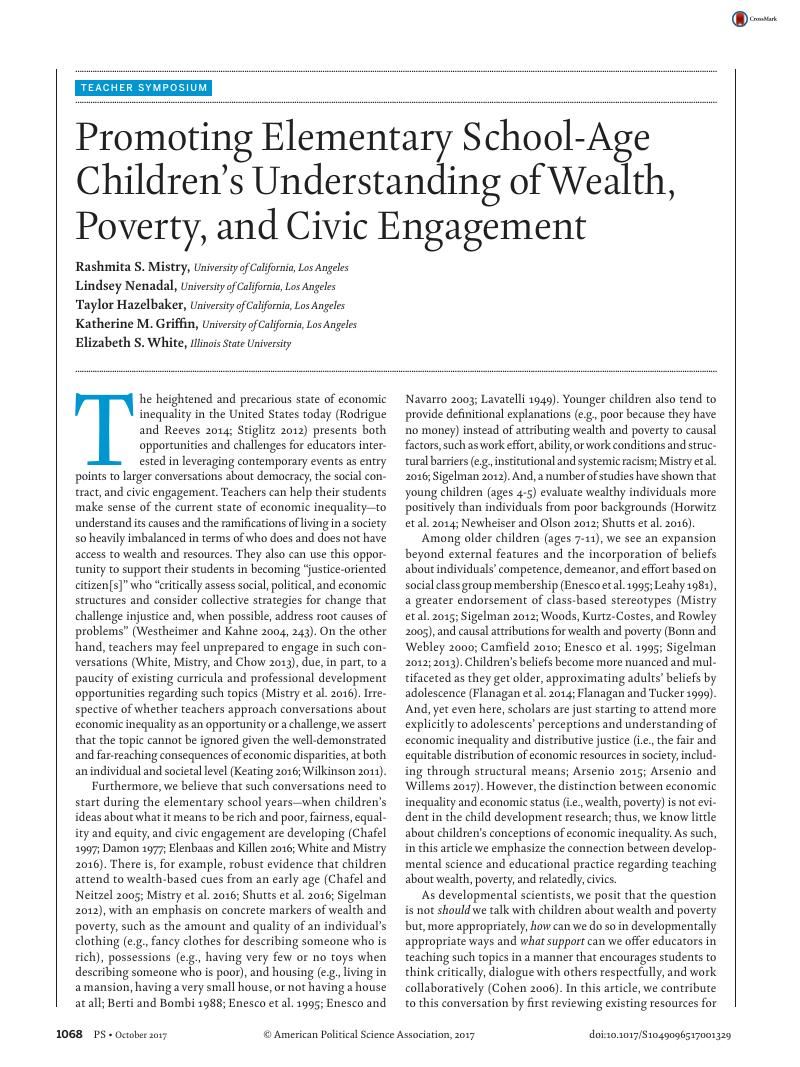Crossref Citations
This article has been cited by the following publications. This list is generated based on data provided by Crossref.
Hazelbaker, Taylor
and
Mistry, Rashmita S.
2018.
“Discrimination in Childhood and Adolescence”: Forging Ahead on a Road Well-Traveled.
Social Justice Research,
Vol. 31,
Issue. 3,
p.
311.
Ilten-Gee, Robyn
and
Manchanda, Sarah
2021.
Using social domain theory to seek critical consciousness with young children.
Theory and Research in Education,
Vol. 19,
Issue. 3,
p.
235.
Peretz‐Lange, Rebecca
Harvey, Teresa
and
Blake, Peter R.
2022.
Socioeconomic status predicts children's moral judgments of novel resource distributions.
Developmental Science,
Vol. 25,
Issue. 4,
Wang, Michelle M.
and
Roberts, Steven O.
2023.
Being from a highly resourced context predicts believing that others are highly resourced: An early developing worldview that stymies resource sharing.
Journal of Experimental Child Psychology,
Vol. 230,
Issue. ,
p.
105624.
Sonu, Debbie
2023.
From criticality to shame: Childhood memories of social class and how they matter to elementary school teachers and teaching.
Theory & Research in Social Education,
Vol. 51,
Issue. 4,
p.
503.
Sonu, Debbie
and
Zaino, Karen
2023.
Breaking Light on Economic Divide: How Elementary School Teachers Locate Class Inequality in Teaching and Schools.
Teachers College Record: The Voice of Scholarship in Education,
Vol. 125,
Issue. 4,
p.
39.





